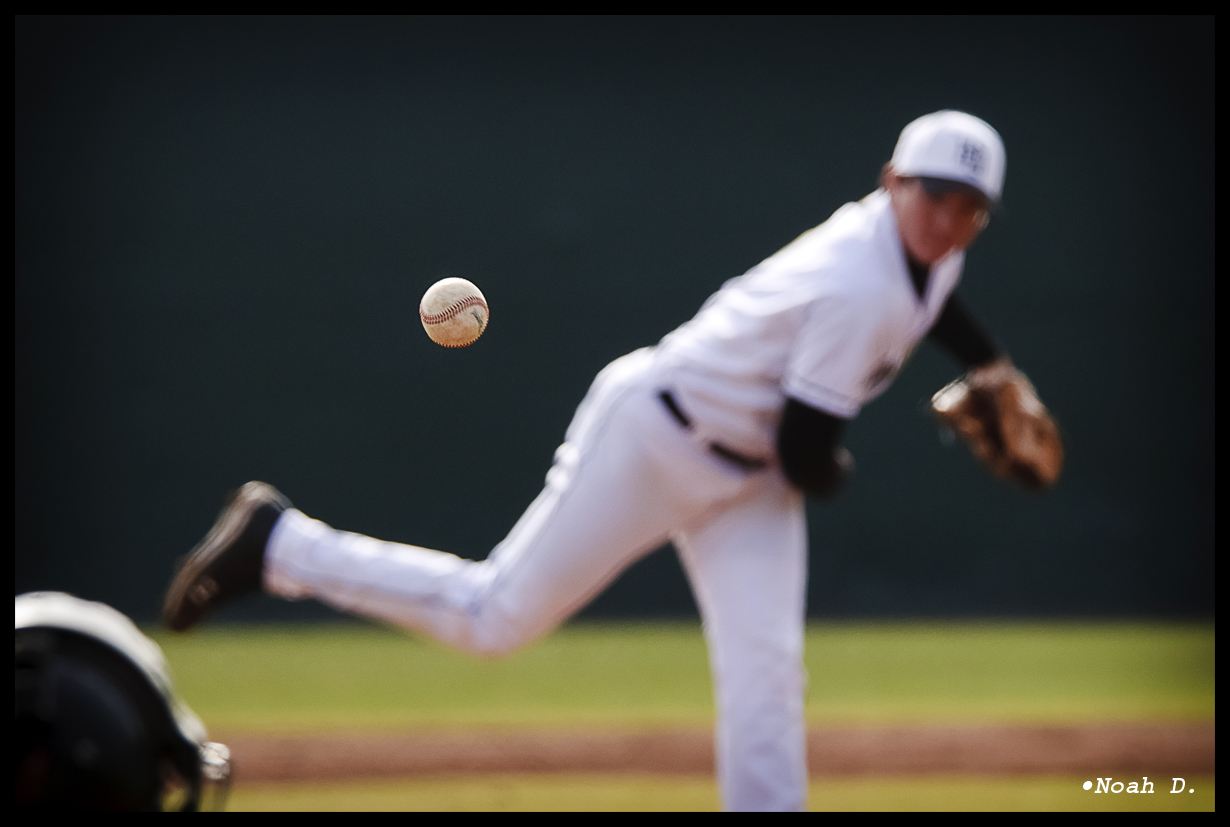<<UPDATED: 21 Feb 2010>>
“Remember that not getting what you want is sometimes a wonderful stroke of luck.” ~His Holiness, 14th Dalai Lama
Keep that in mind, we’ll be coming back to it.
But for now, we’re going to look at what I’ve heard described before as “trick focusing.” Well, I assure you, there is nothing “trick” about it. I think it was probably someone making something out to be harder than it really is. Or maybe making it SEEM harder.
Either way, isn’t it annoying when people do that?
To what am I referring to this “trick focusing”?
Well, today was what one might call “epic”… four games: a baseball game double-header and two basketball games – one women’s, one men’s.
So, with all those photos, might as well give a double dose of photo of the day.
That “trick” focusing I referred to is actually just what anybody would normally call “zone focusing” – just focus it within a zone and you’re good. It used to be done when lenses had a focus scale… and how I miss those in a big way! But for a big gun like the Nikkor 80-400/4.5-5.6 VR, you just gotta guess your zone focus and then let it go. Luckily baseball is one of those extremely predictable sports and you have a few tries with it.
<<UPDATED:
Zone focusing has been used since the beginning of photography, long before cameras even had batteries… or viewfinders!
Look at older lenses, lenses with manual aperture rings. You won’t find them on modern lenses. Its a “scale” that might look sort of like this:
16-11-8-5.6-4-•-4-5.6-8-11-16.
This will match up to a distance scale. In direct-focus lenses – not the modern ones that have motor autofocus drives – the DOF or “zone focus” scale matches directly with the distance… and the range in between each number. At 5.6, EVERYTHING between the 5.6’s will be in focus. If you’re focusing at 10 feet and you’re at f/5.6, everything from about 12 to 8 feet will be in focus. Just an example.
It all has to do with the control of depth of field and “zone focusing” knowing where that depth of field starts and ends. For example, the “zone” of DOF might range from 25 feet in front of the pitcher to 25 feet in front of the batter. Being that most baseball diamonds are 60ft or so from the pitching mound to home plate, that gives you 10 feet of “in focus” area to deal with. Now all that’s left is watching a few pitches go by and get the timing right. Then take the photo. No problem.
The inherent problem you’ll meet is the fact that modern lenses are completely missing the DOF scale. So how do you do it? Guess? No, you don’t have to be that inexact. But all is not lost!
Use that little-used button on the side of the body next to the lens – the depth of field preview button. Find your spot on the ground where the ball will be traveling above and DOF preview it. Trust me, its very accurate.
Or you can guess…
Now, keep in mind that you want the pitcher to be in a “pitcher-ly” position, so the earlier in the distance the better. Too long and he will have lowered his leg and stood up again. Too short and you’ll get too much of him in focus.
We’re not talking inches here, but definitely a few feet.
>>
Oh, and the Dalai Lama quote…
The ever temperamental Quantum radio slaves sometimes frequently fail me and either don’t fire on both ends or unpredictably. But, if one end fires and the other doesn’t, sometimes it gives this really dramatic lighting…
So, sometimes, not getting what you want is a wonderful stroke of luck.
But other times its just freaking annoying to no end.
We’ll see what happens so stay tuned…
-Noah D.





3 Comments
Great shot, Noah! I look forward to heading out to a couple of ACU games this spring to try and grab one of those frozen ball shots. Thanks for the inspiration!
I still don’t understand how you did this after reading your explanation. With zone focusing you’re saying that you did that with autofocus? I don’t see how that’s possible (with a 100 mph ball) without prefocusing it or just switching off AF.
Jon,
Zone focusing has been used since the beginning of photography, long before cameras even had batteries… or viewfinders!
Look at older lenses, lenses with manual aperture rings. You won’t find them on modern lenses. Its a “scale” that might look sort of like this 16-11-8-5.6-4-•-4-5.6-8-11-16. This will match up to a distance scale. In direct-focus lenses – not the modern ones that have motor autofocus drives – the DOF or “zone focus” scale matches directly with the distance… and the range in between each number. At 5.6, EVERYTHING between the 5.6’s will be in focus.
It all has to do with the control of depth of field and “zone focusing” knowing where that depth of field starts and ends. For example, the “zone” of DOF might range from 25 feet in front of the pitcher to 25 feet in front of the batter. Being that most baseball diamonds are 60ft or so from the pitching mound to home plate, that gives you 10 feet of “in focus” area to deal with. Now all that’s left is watching a few pitches go by and get the timing right. Then take the photo. No problem.
Now, keep in mind that you want the pitcher to be in a “pitcher-ly” position, so the earlier in the distance the better. Too long and he will have lowered his leg and stood up again. Too short and you’ll get too much of him in focus.
-Noah D.